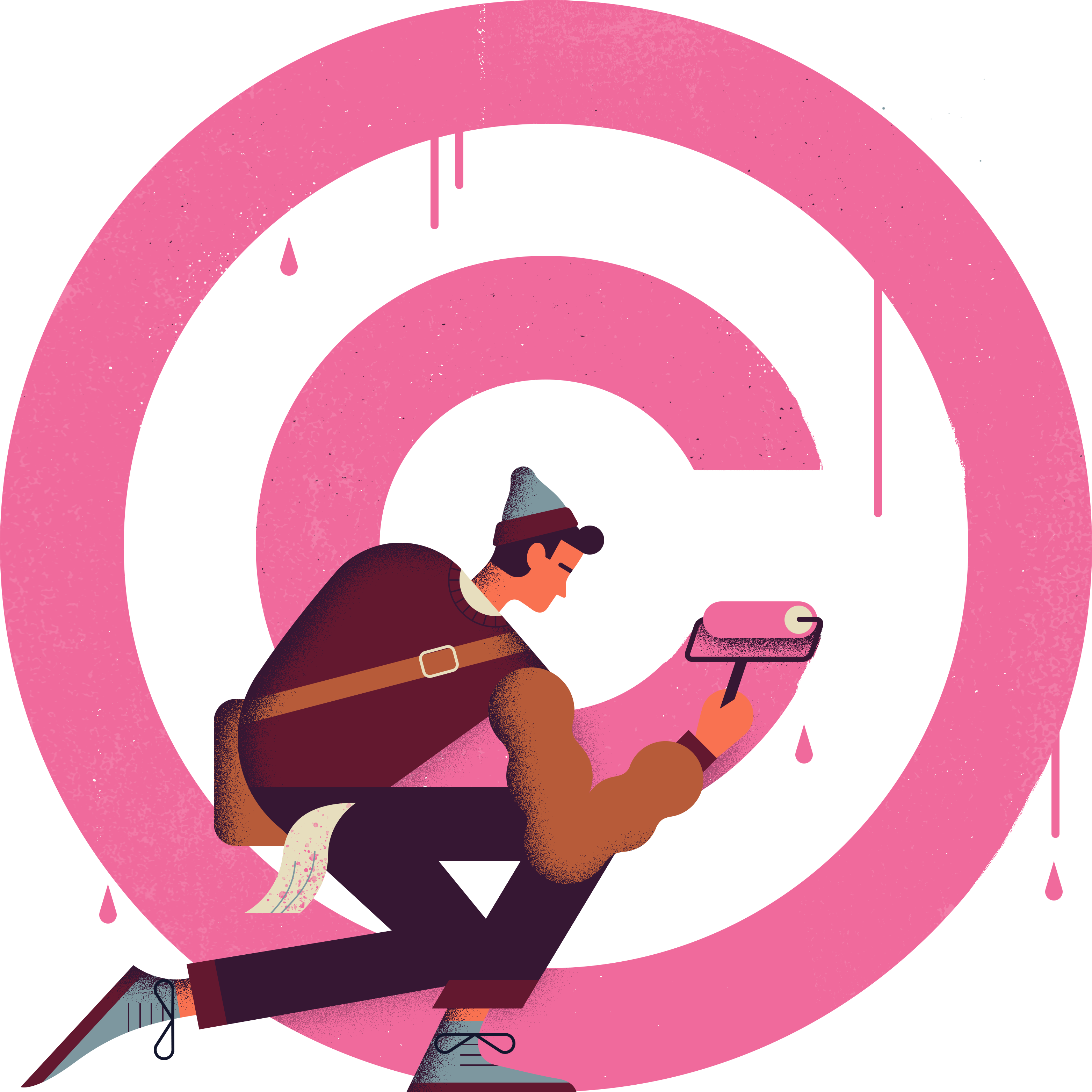Guide to copyright and licensing
Creative professionals license their work; photographers, architects, playwrights, musicians, and even choreographers. Licensing creative work for specific purposes means a client can use the work for a fair price for an agreed period of time, and when that time is up, the artist is free to relicense their creative work elsewhere. It’s a win-win system.

Copyright
Whenever an artist creates something fixed, be that an illustration, a photograph, a song or a novel; that creative product is their intellectual property. They are the creator and the copyright holder.
Copyright allows creators to protect their work from others using it without the creator’s permission. The creator has the legal right to control how their creation is used.
The rights to an illustrator’s works will be protected until 70 years after their death. So even if an illustrator has passed away, the rights to their work will belong to their estate or family. For anyone wanting to use an illustration created by someone else, they must seek permission to do so. This is where licensing comes in.
Licensing
In the same way that you might license a photo from Getty, or pay for a PRS license so you can play music in your workplace, illustrators license their intellectual property.
As the owner of a creative piece of work, an illustrator can license their work for specific purposes, like a magazine cover, children’s book, or a TV commercial. Prices for illustrations are negotiated on the production cost (ie: how much work goes into making it), but also the licence terms:
- Usage – What is it going to be used for? It could be one specific purpose, or the illustration could have several uses by the same client.
- Duration – How long will it be used? An advertising campaign might only run a few days, but illustrations for branding a company might be used for years
- Territory – Where is it going to be used? Is the illustration advertising an event in one location? is it nationwide? Is it worldwide?
Licenses are customised to the needs of the client and the project. They are agreed upon before the project and the price is appropriate to the licence. If a licence needs to be extended at a later date, that’s easy. If the licence is extended, the price will be extended accordingly.
Licences mean the client pays for only what they need, and the illustrator retains ownership of their intellectual property.
Assignment of rights means the artist sells their ownership of the illustration to the client, meaning they no longer have any claim to it. Owning the rights to an illustration is desirable for many clients, but they must be willing to pay what the lifetime value of that illustration is worth. The price for assigning copyright necessarily assumes that the illustration could be used for any media, worldwide, forever.
Exclusivity – A car manufacturer may want to license a particular illustration for six months, for example, but wouldn’t want any of their competitors to be able to relicense the illustration once the licence term ends. This is perfectly normal, and exclusivity periods can be discussed and negotiated as part of the licensing process. This client may want an exclusivity term of an extra six months so no other clients can use the image, or they may want to restrict the use of this illustration by other car manufacturers forever. A reasonable period of exclusivity is usually understood and accepted, but the more strict the client wants to be with the artist’s intellectual property after their licence expires, the more they will need to be willing to pay to accommodate that request, as the artist is potentially losing out on future income by not being able to relicense the work
How licence fees are calculated
If a client uses an illustration for a one night event in one location on a poster, the usage is very small and the price would reflect that. If a client were to use an illustration for billboards, Subway posters, social media adverts, a website, and some magazine adverts across the whole of North America for six months, the licence fee would be appropriate to the large licence. As a general rule of thumb, the more people that will see the illustration out in the world, the higher the licensing fee will be.
There’s no handy online calculator to work this out, it comes down to the particular artist and the client’s particular needs. Licences can be big, small, cheap, expensive, simple, or complex. Our role as agents is to see that each party is treated fairly in the licensing agreement.
